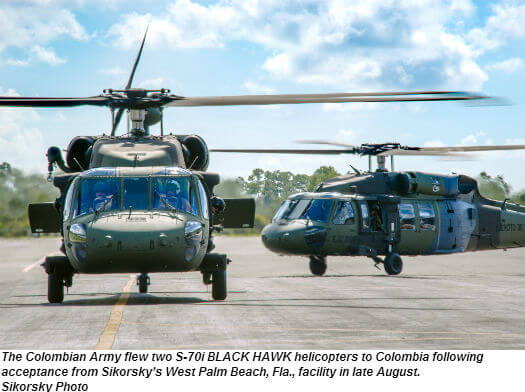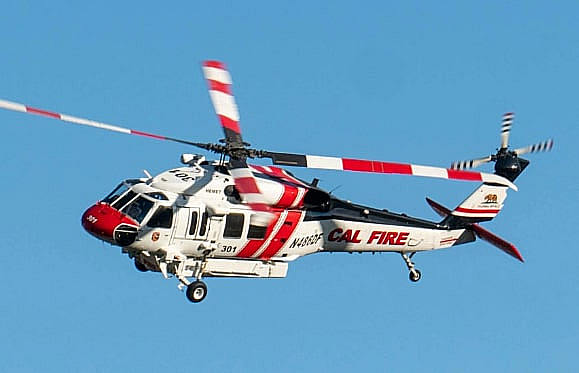Unveiling the Sikorsky S 70: Technologies and Developments in Helicopter Engineering
Unveiling the Sikorsky S 70: Technologies and Developments in Helicopter Engineering
Blog Article
Rotary-Wing Airplane Offering Superior Durability and Accuracy Design
In the realm of air travel, rotary-wing aircraft have long been recognized for their unique abilities in various operational settings. From armed forces missions to private applications, the evolution of rotary-wing modern technology has led the means for makers that supply exceptional toughness and accuracy design. Through developments in materials and building techniques, combined with advanced trip control systems, these airplanes have actually come to be crucial tools for tasks that require both robustness and accuracy. As we explore the elaborate balance between development and dependability in rotary-wing aircraft, it becomes apparent that the convergence of advanced technology and tested style principles has set a brand-new criterion for efficiency and effectiveness in the aerospace market.
Advancement of Rotary-Wing Modern Technology
Throughout the history of aviation, the advancement of rotary-wing innovation has actually been a testimony to consistent development and advancement in aerial engineering. From the early days of upright flight with primary styles to the sophisticated helicopters and various other rotary-wing airplane of today, the progression in this field has actually been exceptional.
In the early 1900s, leaders like Igor Sikorsky and Juan de la Cierva made significant strides in rotary-wing innovation. Sikorsky's VS-300 helicopter, first flown in 1939, noted a turning point in the growth of useful rotary-wing airplane. This success led the way for further improvements in vertical flight capacities.

Today, rotary-wing airplane play critical roles in various industries, including army procedures, emergency situation clinical solutions, regulation enforcement, and business transport. The advancement of rotary-wing modern technology remains to press the borders of what is feasible in upright trip, making certain that these airplane continue to be crucial properties in the aeronautics sector.
Products and Building Innovations
Demonstrating a combination of advanced products and exact building and construction strategies, rotary-wing aircraft have undergone substantial innovations in longevity and efficiency. One of the essential innovations in materials used for rotary-wing aircraft is the raising use of composite materials. These materials, such as carbon fiber enhanced polymers, use a high strength-to-weight ratio, boosting both the architectural integrity and total performance of the airplane. Furthermore, developments in manufacturing procedures have permitted more intricate and specific building and construction of rotary-wing parts, contributing to boosted aerodynamics and performance.
Moreover, the assimilation of sophisticated coverings and surface area therapies has played a vital role in improving the longevity of rotary-wing aircraft. These finishes provide security versus deterioration, abrasion, and extreme climate condition, extending the life expectancy of the airplane and reducing maintenance demands.
In regards to building and construction innovations, additive production, likewise known as 3D printing, has actually revolutionized the production of facility parts for rotary-wing airplane. This innovation enables fast prototyping and personalization, resulting in much faster growth cycles and reduced expenses. On the whole, the continuous evolution of materials and building methods is driving the abilities and efficiency of rotary-wing airplane to brand-new elevations.
Accuracy Trip Control Equipment

The assimilation of GPS modern technology additionally enhances the precision and dependability of these systems, permitting for exact navigation, waypoint monitoring, and automated flight control. sikorsky s 70. This degree of accuracy not only boosts the security of rotary-wing procedures however additionally enhances total operational performance and mission performance
Furthermore, the continual developments in fabricated intelligence and artificial intelligence have promoted the advancement of independent flight abilities within Accuracy Flight Control Solution. This makes it possible for rotary-wing aircraft to carry out intricate goals with exceptional precision and uniformity, making them essential properties in a wide variety of applications, consisting of army operations, search and rescue missions, and aerial digital photography.
Durability in Challenging Atmospheres
In requiring functional setups, rotary-wing airplane demonstrate extraordinary durability and effectiveness, ensuring optimal performance under difficult environmental problems. These airplanes are created to hold up against a large range of environmental elements, including extreme temperatures, high winds, and rough terrain, making them appropriate for different objectives in diverse landscapes.
One essential aspect adding to the toughness of rotary-wing airplane is their tough building. These airplanes are developed utilizing high-grade materials and advanced design methods to improve their structural integrity and reliability. Additionally, parts such as rotor blades, engine systems, and touchdown equipment are thoroughly created to endure the strains and anxieties come across during procedures in tough atmospheres.
Additionally, rotary-wing aircraft are outfitted with innovative onboard systems that keep an eye on performance metrics in real-time, enabling aggressive maintenance and very early detection of potential concerns - sikorsky s 70. This positive method helps protect against unforeseen failures and makes certain the continued airworthiness of the airplane in requiring operational setups. In general, the resilience of rotary-wing airplane in challenging settings is a testament i was reading this to their superior design and layout, making them crucial assets for various mission-critical operations
Maintenance and Integrity Criteria
The adherence to rigorous upkeep and dependability criteria is critical in making certain the ideal efficiency visite site and security of rotary-wing airplane. Regular maintenance checks, conducted by certified professionals, are important to determine and address any potential issues prior to they jeopardize the aircraft's functionality. These checks include a comprehensive evaluation of all essential components, consisting of the engine, blades system, avionics, and hydraulic systems, to guarantee that they are in prime working problem.
Moreover, adherence to scheduled maintenance periods according to manufacturer guidelines is vital for promoting the aircraft's reliability. This positive technique aids prevent unforeseen malfunctions and makes certain that the airplane continues to be airworthy for its intended missions. Furthermore, the execution of durable integrity criteria, such as regular part screening and substitute based upon fixed lifecycles, further enhances the aircraft's dependability.
Conclusion

To conclude, the developments in rotary-wing aircraft innovation have resulted in exceptional sturdiness and precision engineering. With innovative products and building and construction strategies, in addition to accuracy flight control systems, these aircraft can run in tough settings with boosted dependability. The maintenance and reliability standards make certain that these rotary-wing airplane continue to carry out at their best, making them essential properties for numerous markets.
Demonstrating a fusion of sophisticated products and accurate construction strategies, rotary-wing aircraft have undertaken considerable advancements in durability try this out and efficiency. One of the essential innovations in products used for rotary-wing airplane is the enhancing utilization of composite products.With meticulous focus to detail and progressed technological assimilation, rotary-wing airplane have embraced Precision Flight Control Solution as a cornerstone of their operational excellence. In general, the durability of rotary-wing aircraft in difficult atmospheres is a testimony to their superior engineering and layout, making them important possessions for numerous mission-critical operations.
In verdict, the developments in rotary-wing airplane technology have actually led to superior toughness and precision engineering.
Report this page